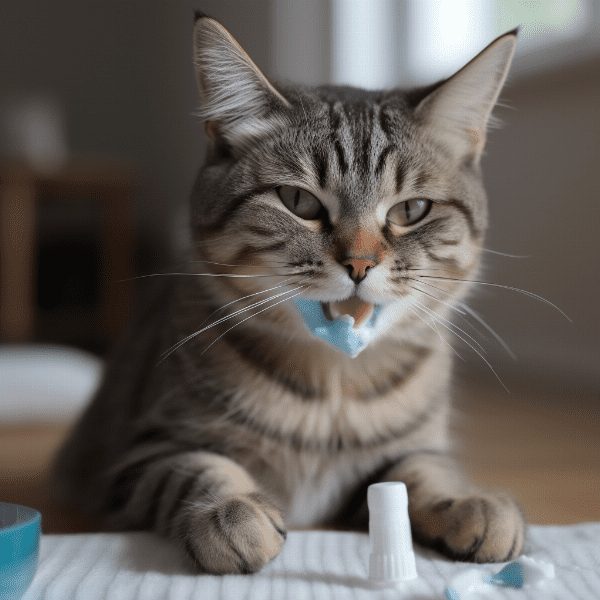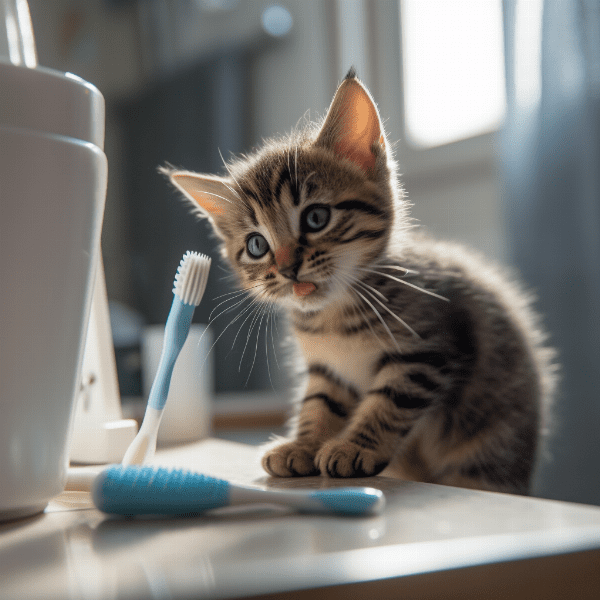Table of Contents
- Understanding Matted Cat Hair
- Preparing for the Grooming Session
- Tools and Products You Will Need
- Techniques for Gently Brushing Matted Cat Hair
- Working Through Tough Knots and Tangles
- Dealing with Sensitive Areas
- Post-Grooming Care for Your Cat
- Preventing Matted Hair in the Future
- When to Seek Professional Help
- Final Tips for Successful Grooming Sessions
Understanding Matted Cat Hair
Cats are known for their fastidious grooming habits, but sometimes, even the most diligent feline can end up with matted fur. Understanding the causes of matted cat hair is key to preventing and treating this common issue.
Causes of Matted Cat Hair
Matted fur occurs when loose hairs become tangled and clump together, forming tight knots that can be difficult to remove. Several factors can contribute to the development of matted cat hair, including:
- Lack of grooming: Cats who are unable or unwilling to groom themselves may develop matted fur, especially in hard-to-reach areas like the back and hindquarters.
- Long hair: Cats with long hair are more prone to matting, as their fur is more likely to tangle and knot.
- Shedding: Cats who shed heavily may develop mats as loose hair becomes entangled.
- Moisture: Wet or dirty fur is more prone to matting, as moisture can cause hair to stick together and form knots.
- Underlying health issues: Certain health conditions, such as arthritis or dental problems, can make it difficult for cats to groom themselves effectively, leading to matted fur.
Signs of Matted Cat Hair
It’s important to check your cat’s fur regularly for signs of matting. Some common indicators of matted cat hair include:
- Tangles and knots: Matted fur will feel bumpy and tangled, with clumps of hair stuck together.
- Lumps and bumps: Large mats may feel like hard lumps under the skin.
- Discomfort: Cats with matted fur may be reluctant to move or groom themselves, and may even experience pain or discomfort.
If you notice any signs of matted fur on your cat, it’s important to address the issue promptly to prevent further complications.
Conclusion
Matted cat hair can be a frustrating and uncomfortable problem for both cats and their owners. By understanding the causes and signs of matted fur, you can take steps to prevent and treat this issue, ensuring that your cat’s coat stays healthy and beautiful.
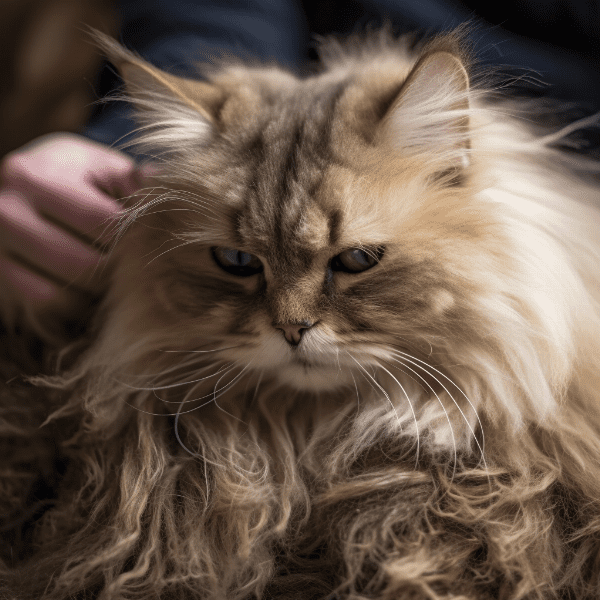
Preparing for the Grooming Session
Before you start brushing your cat’s matted fur, it’s important to prepare for the grooming session to ensure a smooth and stress-free experience for both you and your feline friend.
Set Up a Calm and Comfortable Environment
Cats can be easily stressed by new experiences, so it’s important to create a calm and comfortable environment for the grooming session. Find a quiet room where you won’t be disturbed, and make sure the temperature is warm enough to keep your cat comfortable. If your cat is particularly anxious, you may want to use pheromone sprays or diffusers to help calm them down.
Gather Your Supplies
Make sure you have all the supplies you need before you start grooming. This includes a quality cat brush or comb, a pair of scissors (if needed), and any detangling sprays or grooming products that you plan to use. It’s also a good idea to have some treats on hand to reward your cat for good behavior.
Consider Your Cat’s Mood and Health
It’s important to take your cat’s mood and health into account before starting the grooming session. If your cat is feeling ill or lethargic, it may be best to postpone grooming until they are feeling better. Similarly, if your cat is feeling particularly feisty or energetic, you may want to give them some playtime to burn off excess energy before starting the grooming process.
Conclusion
Preparing for a grooming session is an important step in ensuring a successful and stress-free experience for both you and your cat. By setting up a calm and comfortable environment, gathering your supplies, and considering your cat’s mood and health, you can help make the grooming process as smooth and enjoyable as possible.
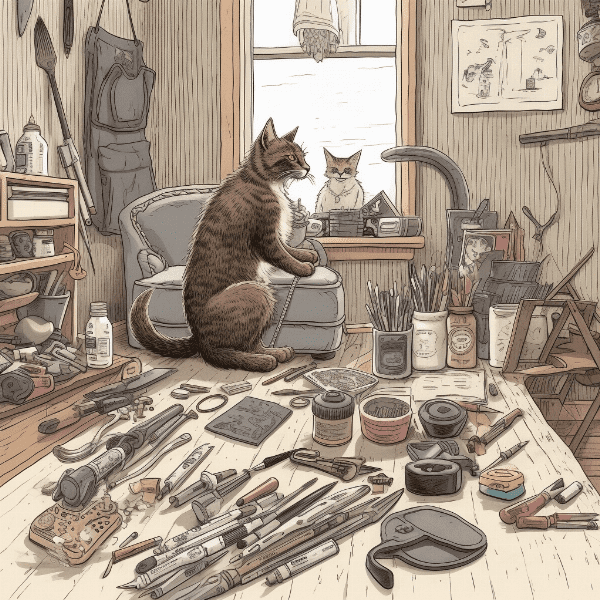
Tools and Products You Will Need
To effectively groom a cat with matted fur, you will need to have the right tools and products on hand. Here are some essential items you should gather before starting the grooming process:
- Wide-toothed comb: This type of comb is best for gently working through mats and tangles, especially in areas where the fur is thick or matted.
- Slicker brush: A slicker brush can help to remove loose fur and detangle any knots or tangles.
- Scissors: It’s important to have a good pair of scissors on hand to carefully trim any stubborn mats or knots that cannot be brushed out.
- Detangling spray: A detangling spray can help to loosen up mats and tangles, making them easier to brush out.
- Cat shampoo: If your cat has extremely matted fur, you may need to give them a bath to fully remove the mats. Be sure to use a shampoo specifically designed for cats, as human shampoo can be too harsh for their sensitive skin.
- Gloves: Wearing gloves can help protect your hands from scratches or bites, especially if your cat is feeling anxious or agitated during the grooming process.
- Eye protection: If your cat is particularly squirmy or has a tendency to scratch or swipe, wearing protective goggles or glasses can help to prevent eye injuries.
Conclusion
Having the right tools and products on hand is essential for successfully grooming a cat with matted fur. By gathering the necessary grooming tools and products, as well as protective gear like gloves and eye protection, you can ensure a safe and effective grooming experience for both you and your feline friend.
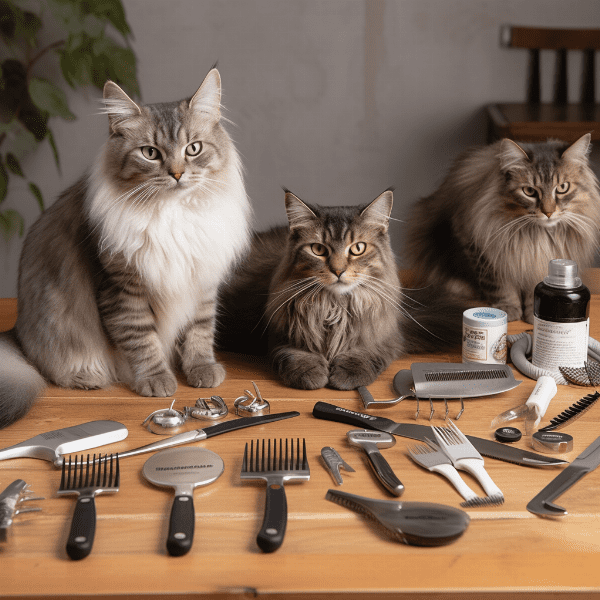
Techniques for Gently Brushing Matted Cat Hair
Grooming a cat with matted fur requires patience and care to avoid causing pain or discomfort to your feline friend. Here are some techniques you can use to gently brush out your cat’s mats and tangles:
Start with a Wide-Toothed Comb
Begin by using a wide-toothed comb to carefully work through the mats and tangles in your cat’s fur. Start at the edges of the mat and work your way inward, gently teasing out the tangled fur as you go. Avoid pulling or tugging on the mat, as this can be painful for your cat.
Try a Slicker Brush
Once you’ve worked through the mats with a comb, use a slicker brush to remove any remaining tangles or loose fur. Use gentle, circular motions to brush through your cat’s fur, being careful not to pull or tug on any remaining mats.
Trim Stubborn Mats
If there are any mats that simply cannot be brushed out, you may need to carefully trim them with a pair of scissors. Be sure to use sharp, high-quality scissors and work slowly and carefully to avoid accidentally cutting your cat’s skin.
Conclusion
Grooming a cat with matted fur requires a gentle touch and a lot of patience. By using a wide-toothed comb to work through the mats, using a detangling spray to loosen stubborn tangles, and using a slicker brush to remove loose fur, you can help your cat’s coat stay healthy and mat-free. And if all else fails, don’t be afraid to trim stubborn mats with a pair of sharp scissors.
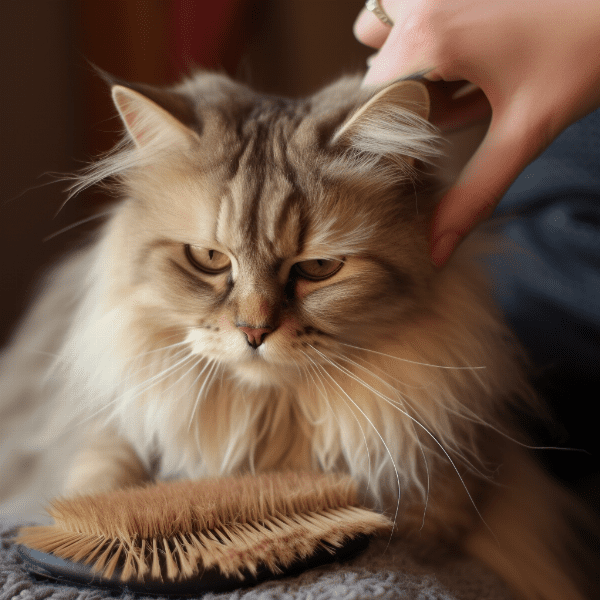
Working Through Tough Knots and Tangles
Cats with matted fur often have tough knots and tangles that can be difficult to work through. Here are some tips for tackling these stubborn mats:
Be Gentle
When working through tough knots and tangles, it’s important to be gentle to avoid causing pain or discomfort to your cat. Use a wide-toothed comb or your fingers to carefully tease out the knot, working from the edges inward. Avoid pulling or tugging on the knot, as this can be painful for your cat.
Use a Detangling Spray
A detangling spray can be a lifesaver when it comes to working through tough knots and tangles. Spray the affected area with the detangler, then use your fingers or a comb to work through the mat. Be sure to use a detangler specifically formulated for cats, as human products can be too harsh for their skin.
Break Up the Knot
For particularly stubborn knots, you may need to break them up into smaller sections to make them more manageable. Use a pair of scissors to carefully snip the mat into smaller pieces, then work through each section with a comb or slicker brush.
Conclusion
Working through tough knots and tangles can be a challenge, but by being gentle, using a detangling spray, breaking up the knot, and seeking professional help when needed, you can help your cat’s coat stay healthy and mat-free. Remember to take your time and work slowly and carefully to avoid causing pain or discomfort to your feline friend.
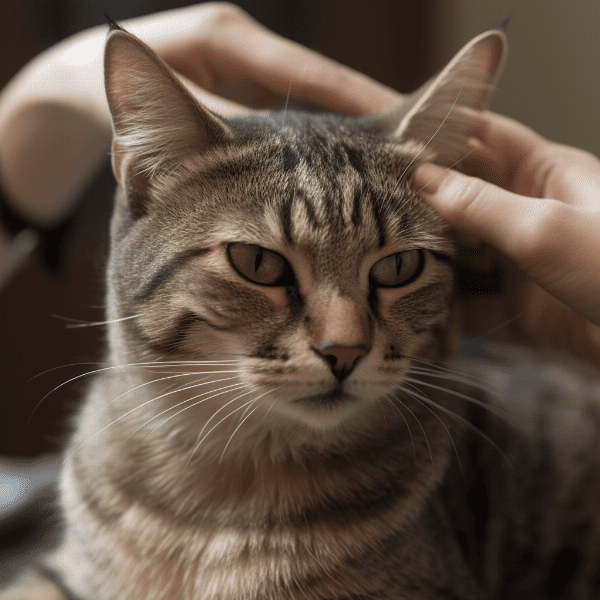
Dealing with Sensitive Areas
Cats with matted fur may have sensitive areas that require extra care during grooming. Here are some tips for dealing with these delicate areas:
Approach with Caution
Sensitive areas such as the ears, tail, and genital area require extra care and attention during grooming. Approach these areas with caution, and be prepared to back off if your cat shows signs of discomfort or agitation.
Use Gentle Techniques
When working in sensitive areas, it’s important to use gentle techniques to avoid causing pain or discomfort to your cat. Use a wide-toothed comb or slicker brush to work through any mats or tangles, and avoid pulling or tugging on the fur.
Watch for Signs of Discomfort
Keep an eye out for signs of discomfort or pain during grooming. If your cat begins to squirm, vocalize, or exhibit signs of stress, it may be time to take a break or stop the grooming session altogether.
Seek Professional Help
If you’re uncomfortable or unsure about grooming your cat’s sensitive areas, it may be best to seek professional help. A professional groomer or veterinarian can safely and effectively groom your cat, ensuring that sensitive areas are handled with the appropriate care and attention.
Conclusion
Dealing with sensitive areas can be a challenge when grooming a cat with matted fur. By approaching these areas with caution, using gentle techniques, watching for signs of discomfort, and seeking professional help when needed, you can help ensure that your cat’s grooming experience is safe and comfortable. Remember to be patient and take your time, and don’t hesitate to seek help if you’re unsure or uncomfortable with the grooming process.
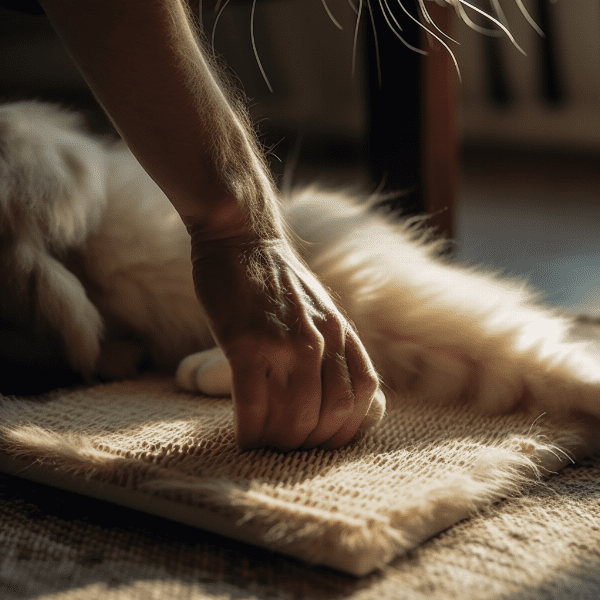
Post-Grooming Care for Your Cat
After grooming your cat with matted fur, it’s important to provide them with proper post-grooming care to ensure their comfort and wellbeing. Here are some tips for caring for your cat after a grooming session:
Check for Irritation or Injuries
After grooming your cat, take a few minutes to carefully inspect their skin for any signs of irritation, redness, or injury. Look for scratches or cuts that may have been caused by the grooming tools, and check for any areas that seem particularly sensitive or painful.
Reward Your Cat
Reward your cat for their good behavior during the grooming session. Offer them a special treat or toy, and spend some extra time playing or snuggling with them to help them feel loved and appreciated.
Provide a Comfortable Environment
After grooming, make sure your cat has access to a comfortable and cozy environment where they can rest and relax. Offer them a soft bed or blanket, and provide plenty of fresh water and food to help them feel nourished and hydrated.
Follow Up as Needed
If your cat’s fur was particularly matted or tangled, you may need to schedule additional grooming sessions to fully address the issue. Make sure to follow up with your cat’s grooming needs as needed to prevent further matting and ensure their coat stays healthy and beautiful.
Conclusion
Proper post-grooming care is essential for ensuring your cat’s comfort and wellbeing after a grooming session. By checking for irritation or injuries, rewarding your cat, providing a comfortable environment, and following up as needed, you can help ensure that your cat’s grooming experience is a positive one. Remember to take your time and be patient with your furry friend, and don’t hesitate to seek professional help if you need it.
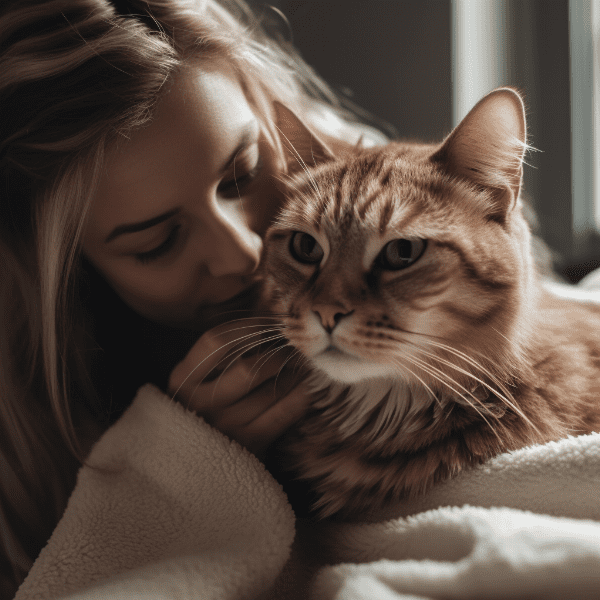
Preventing Matted Hair in the Future
While grooming a cat with matted fur can be a challenging experience, there are steps you can take to prevent matting from occurring in the first place. Here are some tips for preventing matted hair in the future:
Brush Your Cat Regularly
Regular brushing is key to preventing matting in your cat’s fur. Brush your cat’s coat at least once a week using a wide-toothed comb or slicker brush, paying special attention to areas that are prone to matting such as the belly, armpits, and behind the ears.
Trim Long Hair
If your cat has long hair, consider trimming it on a regular basis to prevent tangles and matting. You can use a pair of scissors or take your cat to a professional groomer for a trim.
Keep Your Cat Hydrated
Dehydration can contribute to dry, brittle fur that is more prone to matting. Make sure your cat always has access to fresh water to help keep their coat healthy and hydrated.
Use Grooming Products
Using grooming products such as detangling sprays and conditioners can help prevent matting in your cat’s fur. Look for products specifically designed for cats, and use them as directed to keep your cat’s coat healthy and mat-free.
Conclusion
Preventing matted hair in your cat requires regular grooming and attention to their coat’s health. By brushing your cat regularly, trimming long hair, keeping your cat hydrated, and using grooming products, you can help prevent matting and keep your cat’s coat healthy and beautiful. Remember to be patient and gentle with your furry friend, and don’t hesitate to seek professional help if you need it.
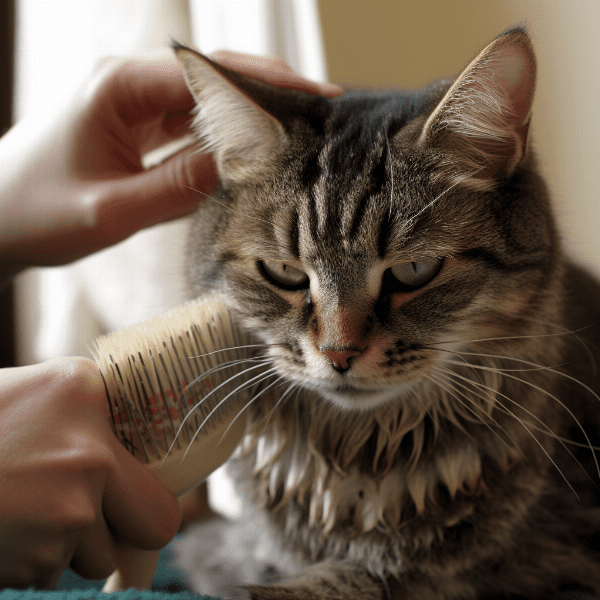
When to Seek Professional Help
Grooming a cat with matted fur can be a challenging and time-consuming process, and in some cases, it may be necessary to seek professional help. Here are some situations where it may be best to seek the assistance of a professional groomer or veterinarian:
Severely Matted Fur
If your cat’s fur is severely matted, it may be too difficult or painful to remove the mats on your own. A professional groomer can safely and effectively remove the mats, ensuring that your cat stays comfortable and healthy throughout the process.
Behavioral Issues
If your cat becomes aggressive or agitated during grooming sessions, it may be best to seek the assistance of a professional. A professional groomer or veterinarian can help manage your cat’s behavior and ensure that the grooming process is safe for both you and your cat.
Medical Conditions
If your cat has a medical condition such as arthritis or skin allergies that makes grooming difficult or uncomfortable, a professional groomer or veterinarian can help provide specialized care and ensure that your cat stays comfortable and healthy.
Inexperience
If you’re new to grooming cats or unsure about how to handle matted fur, it may be best to seek the guidance of a professional. A professional groomer or veterinarian can provide tips and advice on how to safely and effectively groom your cat, ensuring that they stay healthy and happy.
Conclusion
Knowing when to seek professional help is key to ensuring your cat’s health and wellbeing during the grooming process. If your cat’s fur is severely matted, they exhibit behavioral issues, have medical conditions that make grooming difficult, or if you’re inexperienced with grooming cats, it may be best to seek the assistance of a professional groomer or veterinarian. Remember to prioritize your cat’s comfort and safety, and don’t hesitate to seek help when needed.
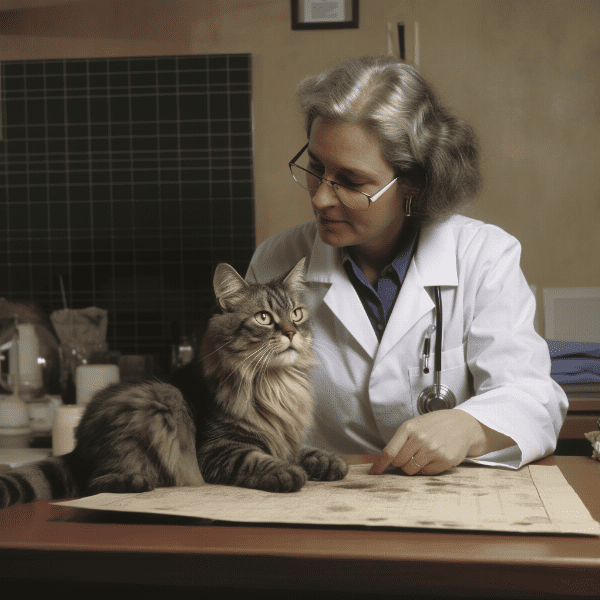
Final Tips for Successful Grooming Sessions
Grooming a cat with matted fur can be a challenging experience, but with the right tools, techniques, and approach, you can help keep your cat’s coat healthy and beautiful. Here are some final tips for successful grooming sessions:
Be Patient and Gentle
Grooming a cat with matted fur requires patience and a gentle touch. Take your time, and be gentle when working through knots and tangles to avoid causing pain or discomfort to your cat.
Use the Right Tools and Products
Using the right tools and products can make all the difference when it comes to grooming your cat. Make sure to use a wide-toothed comb, slicker brush, and detangling spray specifically designed for cats, and consider using a conditioner to help keep your cat’s coat healthy and shiny.
Take Breaks as Needed
If your cat becomes agitated or restless during grooming, it may be time to take a break. Offer your cat some treats or toys to help them relax, and resume grooming when they’re feeling more calm and comfortable.
Reward Good Behavior
Reward your cat for their good behavior during grooming sessions. Offer them treats, toys, or affection to help reinforce positive behavior and make grooming a more positive experience for both of you.
Seek Professional Help When Needed
If you’re struggling to groom your cat’s matted fur or if your cat exhibits behavioral or medical issues during grooming, don’t hesitate to seek professional help. A professional groomer or veterinarian can provide specialized care and ensure that your cat stays healthy and comfortable.
Conclusion
Grooming a cat with matted fur requires patience, care, and attention to detail. By being patient and gentle, using the right tools and products, taking breaks as needed, rewarding good behavior, and seeking professional help when needed, you can help keep your cat’s coat healthy and beautiful. Remember to prioritize your cat’s comfort and safety, and don’t hesitate to seek help when needed.


